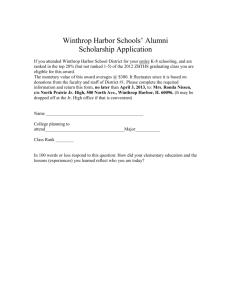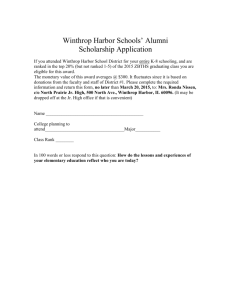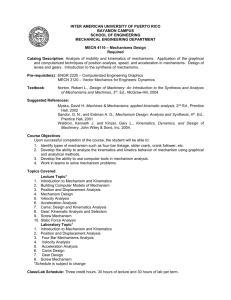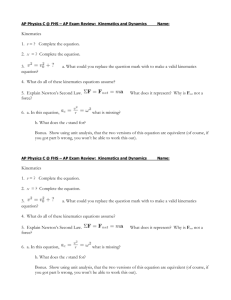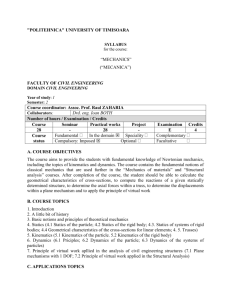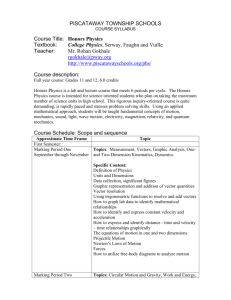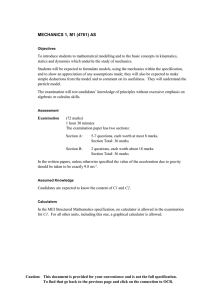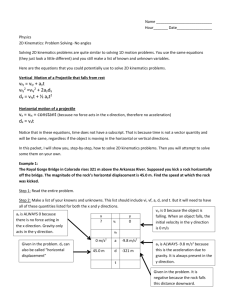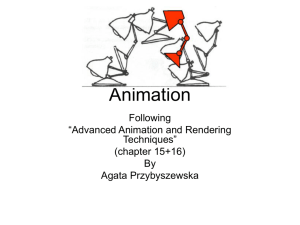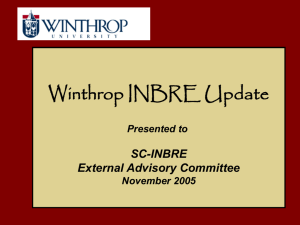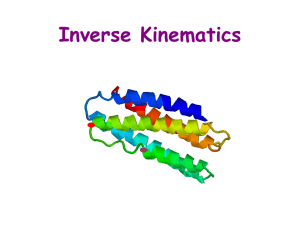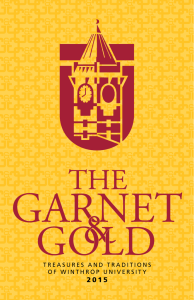Phys and Algebra - Chemistry at Winthrop University
advertisement
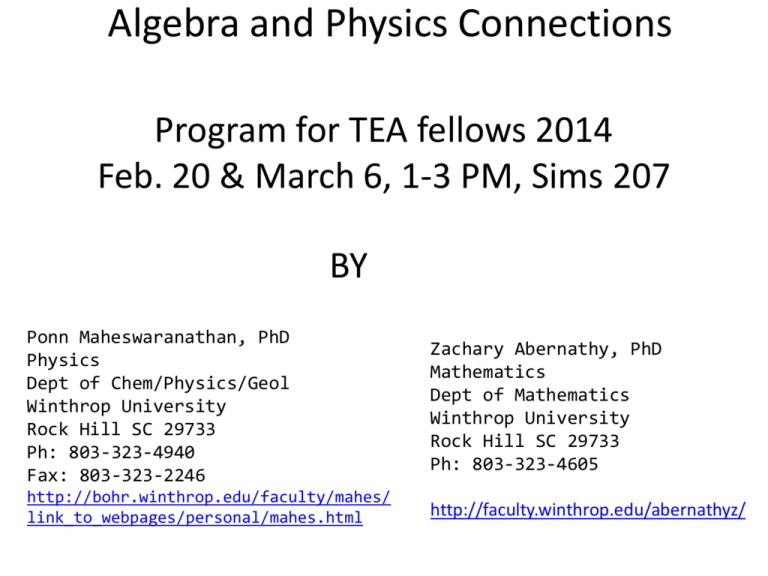
Algebra and Physics Connections Program for TEA fellows 2014 Feb. 20 & March 6, 1-3 PM, Sims 207 BY Ponn Maheswaranathan, PhD Physics Dept of Chem/Physics/Geol Winthrop University Rock Hill SC 29733 Ph: 803-323-4940 Fax: 803-323-2246 Zachary Abernathy, PhD Mathematics Dept of Mathematics Winthrop University Rock Hill SC 29733 Ph: 803-323-4605 http://bohr.winthrop.edu/faculty/mahes/ link_to_webpages/personal/mahes.html http://faculty.winthrop.edu/abernathyz/ Useful Websites • http://www.goorulearning.org/gooru/index.g?gclid=CK2uzvucw 7UCFQjNnAod2ioAmQ#!/library/tilesView/20001/22912/22913 • https://www.khanacademy.org/ • http://www.hippocampus.org/ • http://ocw.mit.edu/index.htm • http://sprott.physics.wisc.edu/wop.htm • http://tutoring.sylvanlearning.com/newsletter/0704/math.cfm • http://www.mrlsmath.com/20-free-resources-for-high-schoolmath-teachers/ Mechanics The study of Physics begins with mechanics. Mechanics is the branch of physics that focuses on the motion of objects and the forces that cause the motion to change. There are two parts to mechanics: Kinematics and Dynamics. Kinematics deals with the concepts that are needed to describe motion, without any reference to forces. Motion Along a Straight Line Motion in two and three dimensions Dynamics deals with the effect that forces have on motion. Newton’s Laws of Motion Terms in Kinematics: Position, Displacement, Distance, Speed, Velocity, and Acceleration. Walking in the Park Constant Acceleration: Kinematics Equations Equation v v0 at Missing Quantity x-x0 1 2 x x0 v0 t at 2 v v 2 v0 2a( x x0 ) t 2 x x0 1 (v0 v)t 2 a 1 2 at 2 v0 x x0 vt http://www.physicsclassroom.com/class/1dkin/u1l6c.cfm Activities 1. Problems with Kinematic Equations 2. Problems with vertical kinematics 3. Plotting Motion Graph 4. Combining Resistors

